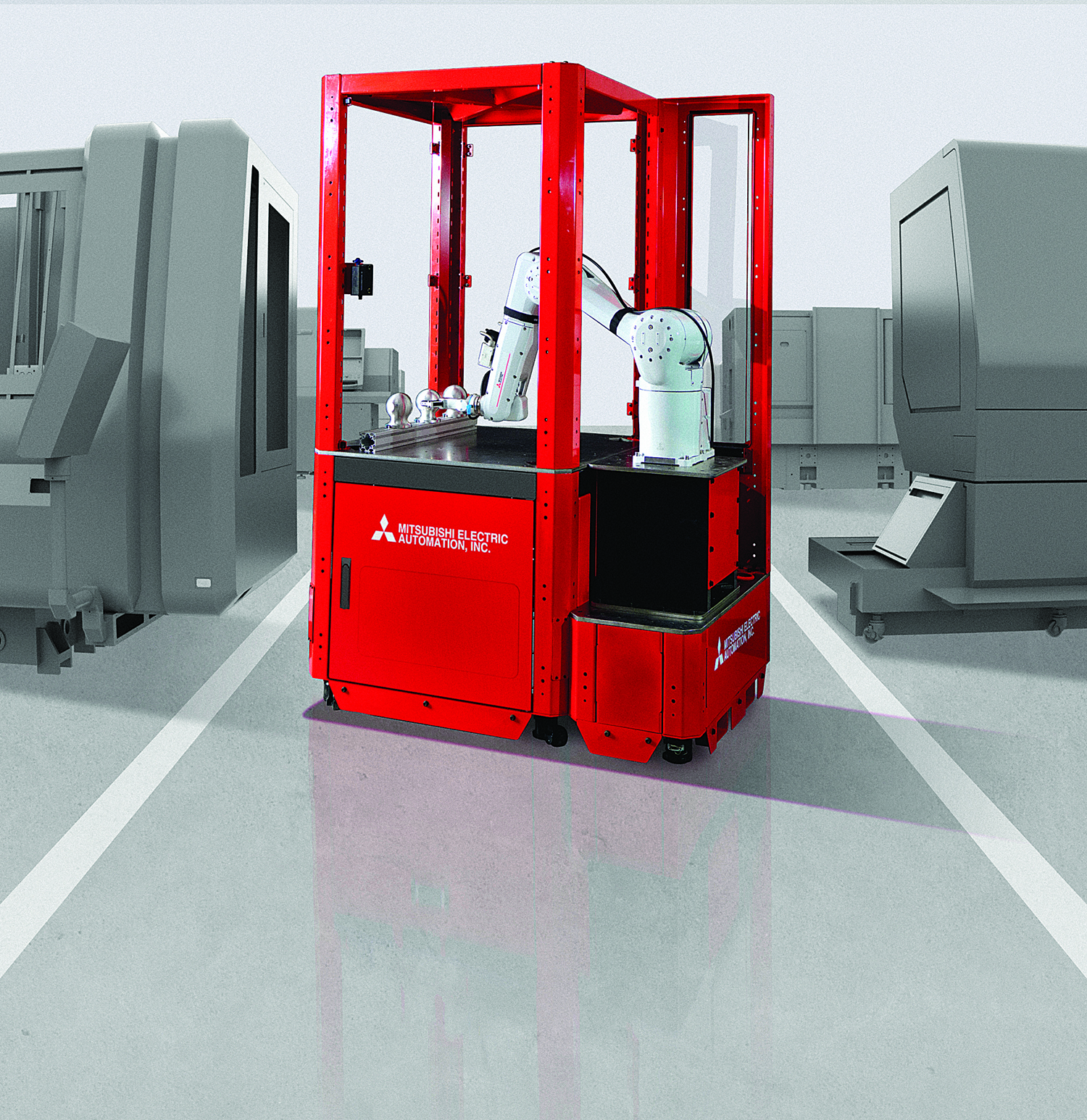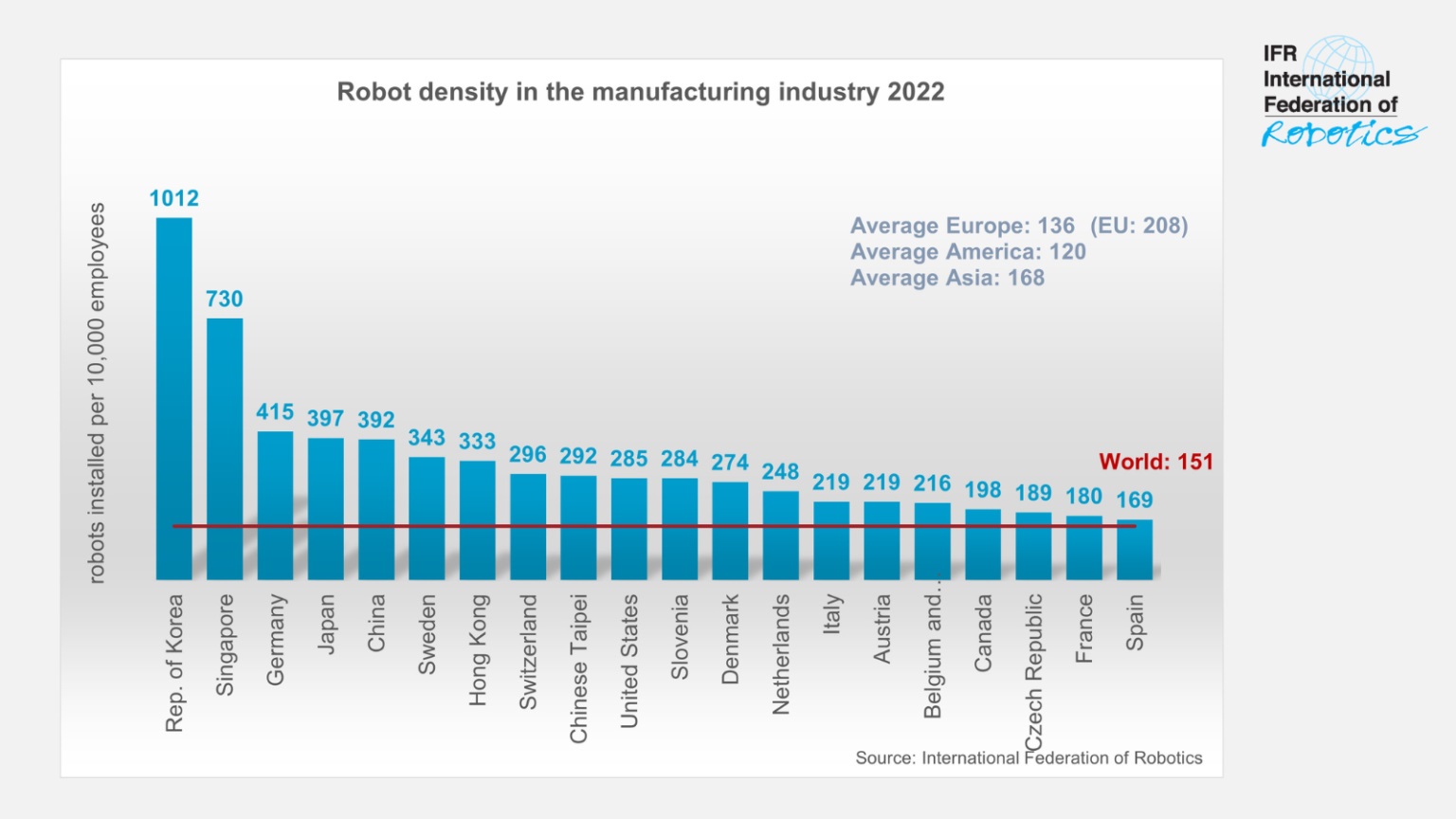
U.S. companies continue to invest in robots, even as the world set a record with 3.9 million operational robots in 2022, according to the new World Robotics report from the International Federation of Robotics (IFR). The report also included information about robot density worldwide. Robot density measures the number of operational industrial robots per 10,000 employees in a country.
“Robot density data reveal the state of automation worldwide and allow us to compare regions and countries,” Marina Bill, President of the IFR, said. “The speed of robotics adoption in factories around the world is impressive: the new global average robot density hit an all-time high of 151 robots per 10,000 employees – more than double the number measured only six years ago.”

The U.S. was the 10th most automated country worldwide in 2022 with 285 units. This increased from 2021 when it had 274 units for every 10,000 employees. However, in 2021 the U.S. was the 9th most automated country worldwide.
South Korea was the most automated country by robot density in 2022, according to the IFR. It clocked in at 1,012 robots per 10,000 employees. This shouldn’t come as a surprise, as South Korea was the most automated country in 2020 and 2021. South Korea’s robotics industry is still growing strong. Its robot density has increased by 6% on average each year since 2017. Its economy benefits from two large robot buyers, as well as a strong electronics industry and automotive industry.
Following South Korea is Singapore with 730 units. Singapore is much smaller than South Korea and many of the other countries on this list. In 2021, Singapore had a population of 5.45 million, compared to South Korea’s 51.74 million. It also has a smaller manufacturing industry.
Germany was the third most automated country in 2022 with 415 robots per 10,000 employees. Its robot density has grown by 5% CAGR since 2017. Following Germany is Japan with 397 units. This was down slightly from a robot density of 399 the prior year. However, the IFR said Japan’s robot density has grown by 7% on average each year from 2017-2022.
China came in as the fifth most automated country with 392 units. It rose to 5th place in 2021 and stays there in 2022. The country has been heavily investing in its robotics industry in recent years. In 2021, China’s Ministry of Industry and Information Technology, in collaboration with 14 other government departments, revealed how it will continue to grow the country’s robotics industry in its 14th five-year plan.
In 2023, it created a new action plan called called the “Robot + Application Action Plan.” This plan lays out 10 industries the country wants to focus on developing robotic systems for and overarching goals for the country’s robotics industry to hit by 2025. The country also said it planned to mass-produce humanoid robots by 2025.
Related Glossary Terms
- robotics
robotics
Discipline involving self-actuating and self-operating devices. Robots frequently imitate human capabilities, including the ability to manipulate physical objects while evaluating and reacting appropriately to various stimuli. See industrial robot; robot.







